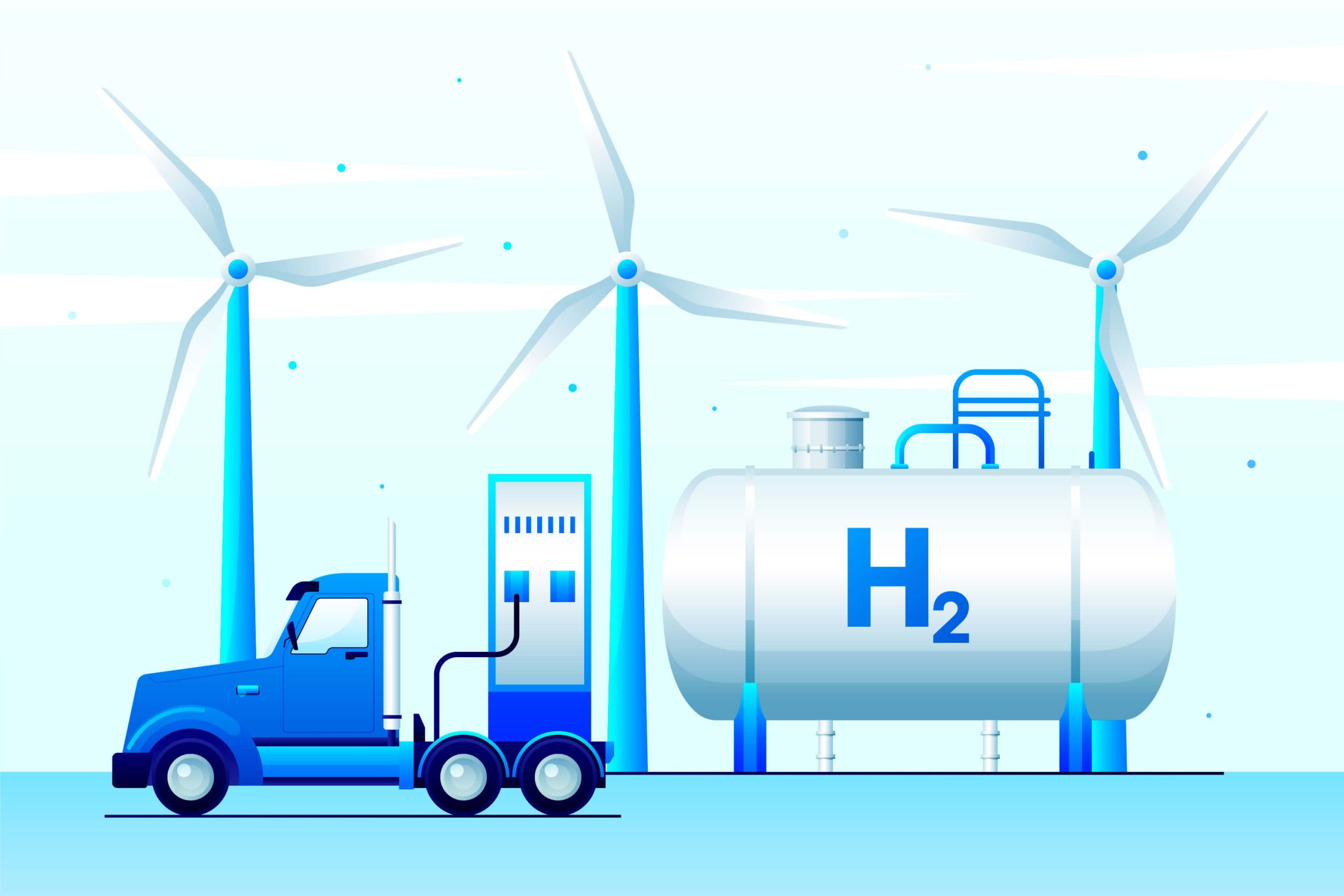The transition to renewable energy (RE) and sustainable mobility is accelerating, with hydrogen emerging as a key player. A recent study explores the feasibility of decentralized hydrogen production to power large-scale Hydrogen Refueling Stations (HRS) in Germany. By leveraging solar and wind energy, the research optimizes system design to minimize costs while ensuring uninterrupted supply for fuel cell vehicles (FCEVs).
Key Findings
1. System Design and Optimization
– The study uses a multi-objective optimization approach (NSGA-II algorithm) to balance two goals:
– Minimizing the Levelized Cost of Hydrogen (LCOH).
– Reducing reliance on external hydrogen purchases.
– The system integrates photovoltaic (PV) plants and wind farms with electrolyzers, compressors, and storage units. A “swap body” (SB) concept enables flexible hydrogen transport.
2. Technological Insights
– Electrolysis: Proton Exchange Membrane (PEM) electrolyzers were chosen for their rapid response to RE fluctuations.
– Storage: Hydrogen is compressed to 250–425 bar for mobile SBs and stationary buffers.
– Refueling: HRS components (e.g., 350/700 bar dispensers, chillers) are optimized to meet daily demands of up to 1,019 kg for trucks and vans.
3. Economic Results
– Scenario 1 (PV-dominated): LCOH = **18.12 €/kg**, with 59% PV and 31% wind energy.
– Scenario 2 (Wind-dominated): Lower LCOH (**15.58 €/kg**) due to adjusted wind energy pricing.
– Scenario 3 (Grid-assisted): LCOH drops to **13.92 €/kg** with higher grid electricity use (23%).
– Cost Drivers: Electricity procurement (50–55% of LCOH) and CAPEX (25–28%) dominate expenses.
4. Sensitivity Analysis
– LCOH is highly sensitive to electricity costs (±24% change for ±40% price variation).
– CAPEX adjustments have a smaller impact (±11%), while REPLEX and revenue effects are marginal.
Challenges and Limitations
– Weather Dependency: The model assumes static annual RE profiles, ignoring yearly variability.
– Electrolyzer Degradation: Efficiency losses over time are accounted for economically but not dynamically simulated.
– Regional Constraints: Germany’s higher grid costs and lower solar availability compared to sunnier regions limit cost reductions.
Conclusion and Future Outlook
The study confirms that decentralized green hydrogen production is viable for HRS, with LCOH competitive against European benchmarks. Key recommendations include:
– Policy Support: Subsidies for RE-powered electrolysis could further reduce costs.
– Technology Advancements: Improved electrolyzer durability and higher RE penetration will enhance efficiency.
– Scalability: The SB concept is adaptable for regional networks, but pipelines may become viable for larger demands.
Levelized Cost of Hydrogen (LCOH) – Meaning and Importance
The Levelized Cost of Hydrogen (LCOH) is a key economic metric used to evaluate the average cost of producing hydrogen over the lifetime of a project, accounting for all expenses (capital, operational, and fuel costs). It helps compare different hydrogen production methods (e.g., electrolysis vs. fossil-based) and assess financial feasibility.
How LCOH is Calculated
LCOH is derived similarly to the Levelized Cost of Electricity (LCOE) but tailored for hydrogen. The formula considers:
LCOH = Total Lifetime Costs (CAPEX + OPEX + REPLEX)/{Total Lifetime Hydrogen Production}
– CAPEX: Upfront investment (electrolyzers, storage, compressors).
– OPEX: Ongoing operational costs (electricity, maintenance, water).
– REPLEX: Replacement costs (e.g., electrolyzer stack renewals).
– Hydrogen Production: Total kg of H₂ produced over the system’s lifespan.
Why LCOH Matters
1. Comparison Tool
– Helps compare green hydrogen (from renewables) vs. gray/blue hydrogen (from fossil fuels with/without carbon capture).
2. Investment Decisions
– Governments and companies use LCOH to assess subsidies, tax incentives, and project viability.
3. Policy & Market Pricing
– Determines whether hydrogen can compete with diesel, gasoline, or battery-electric alternatives in transport/industry.
Key Factors Affecting LCOH
1. Electricity Price (Biggest influence)
– Cheaper renewables (wind/solar) → Lower LCOH.
2. Electrolyzer Efficiency & Cost
– PEM electrolyzers (used in the study) are flexible but still expensive.
– Future tech improvements could lower CAPEX.
3. Capacity Utilization
– More “full-load hours” (consistent operation) → Lower LCOH.
– Intermittent renewables (like solar in Germany) raise costs due to downtime.
4. Storage & Transportation
– Compressing H₂ (to 250–425 bar, as in the study) adds costs.
– Pipelines are cheaper for large-scale transport but require high demand.
LCOH in the Above Study’s Context
– The paper optimized LCOH for a German HRS using:
– PEM electrolyzers + PV/wind + swap-body storage.
– Achieved 13.92–18.12 €/kg, with electricity costs being the largest contributor (~50–55%).
– Sensitivity: A 40% drop in electricity costs could reduce LCOH by ~24%.
Takeaway
LCOH is the “gold standard” for hydrogen cost analysis. While green hydrogen is currently more expensive than fossil-based H₂, declining renewable energy prices and tech advancements are expected to close the gap by 2030–2040.
For policymakers/businesses: Focus on reducing electricity costs (via renewables) and scaling up electrolyzer production to make green hydrogen competitive.
Final Thought: As hydrogen infrastructure matures, such decentralized systems could play a pivotal role in achieving carbon-neutral mobility, particularly for heavy-duty transport.




